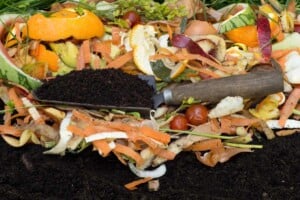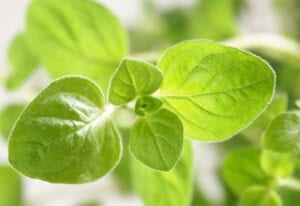Chervil (Anthriscus cerefolium), also known as French parsley, is a well-known culinary herb of the carrot family and frequently found in French cooking.
It’s a key ingredient in fines herbes, often combined with fresh chives, parsley, tarragon and sometimes dried marjoram. By itself, it adds its unique parsley-anise flavor when added to eggs, cheese dishes, cream sauces and meats, including veal, chicken and seafood.
Chervil loses much of its distinctive flavor when dried. It’s at its best when fresh-picked, whether in sprigs added to a spring salad or as a late addition to beurre blanc and other white sauces.
The best way to assure a supply of fresh chervil is to grow it at home. Grocery stores seldom carry it. Easy and quick to harvest, chervil should be in every kitchen garden that can provide the cool moist conditions it likes. It’s flat, lacy, celery-like leaves make it particularly attractive when grown in pots. And, with proper temperatures and lighting, chervil can be grown indoors during winter.
All heirloom herb seeds offered by Planet Natural are non-treated, non-GMO and NOT purchased from Monsanto-owned Seminis. Planting instructions are included with each packet and shipping is FREE!
Quick Guide: Planting, Growing & Harvesting Chervil
- Appearance is like parsley; prefers cool weather and some shade
- Easy to start from seed and care for
- Prefers amended soil and consistent watering
- Best used fresh; harvest before hot weather causes plants to bolt
Sunlight: Prefers light shade
Maturity: 40-60 days
Height: 1-2 feet
Spacing: 8-12 inches
Site Preparation
Soil in which chervil grows should ideally have a pH reading between 6.5 and 7.0. The plants will tolerate shade and actually struggle in full sun.
Good water-retention is a must. Mix in plenty of sphagnum peat moss or coconut coir to assure that the soil won’t dry out. After sowing seed, keep the area misted or cover it with wet newspaper to assure the the soil doesn’t dry out before germination.
Depending on the weather, seed will take 10 days or more to germinate. Chervil requires little feeding. A single application of balanced, slow-release fertilizer before planting should be sufficient. Liquid seaweed used as a foliar supplement can be sprayed on after the plants leaf. Too much feeding will result in larger but less flavorful leaves.
How to Plant
Some sources suggest starting chervil seed inside four to six weeks before setting it out but we’ve had limited success when transplanting chervil to the garden. Instead, sow the seed directly in the garden, covering with a tiny skin of soil or just tamping the seed into the earth with your palm.
Tips & Techniques
Because chervil germinates well in cool weather conditions, it should be planted early and harvested before the heat of summer. Chervil becomes bland, bitter and tough if left to grow in hot weather. Its short growing season makes it ideal for multiple and late season planting. Wait until evenings are cool in late August or September before planting a second crop.
Chervil bolts easily, forming delicate, white flowers. If left to go to seed, chervil will self-seed. Mulching your garden patch in the fall will likely mean new plants come spring. In regions where the ground doesn’t freeze deeply during winter, chervil can be sown in the fall and then mulched heavily to survive the winter. There’s nothing quite like pulling back the mulch after the first warm days of spring and finding chervil already reaching for the sun.
Chervil takes well to container growing. Pots should be deep enough to accommodate the herb’s long taproot and the soil should be well-drained and moisture retentive. Pick it frequently and replant after it flowers. Flowering chervil can be an attractive addition to a collection of containers or mixed in with other flowering plants, including nasturtiums.
Chervil also grows well indoors. Cooler places are best. Keep it away from heat ducts and radiators. Place it in a window where it gets four hours of sunlight a day or keep it under lights. Don’t allow its soil to dry completely. Just a few leaves picked from your overwinter indoor plant will make an omelet something special.

Harvesting and Storage
Wait about 45-60 days before picking leaves. Flavor is best in more mature leaves, so new growth will not offer the same impact. Leaves grow throughout the season, so plan to harvest one-third of the leaves at a time for a continuous supply.
If you have an abundance of chervil, try freezing it in plastic bags. Its flavors should last in the freezer for up to six months. Chervil can also be used to flavor butter or oils. Melt the butter or warm the oil — olive and grapeseed work well — then turn off the heat before adding the chopped chervil (always cook chervil briefly so that it retains its flavor). The bottled oil will last weeks on the counter. The infused butter should be refrigerated.
Insect & Disease Problems
Chervil is rarely bothered by pests.











